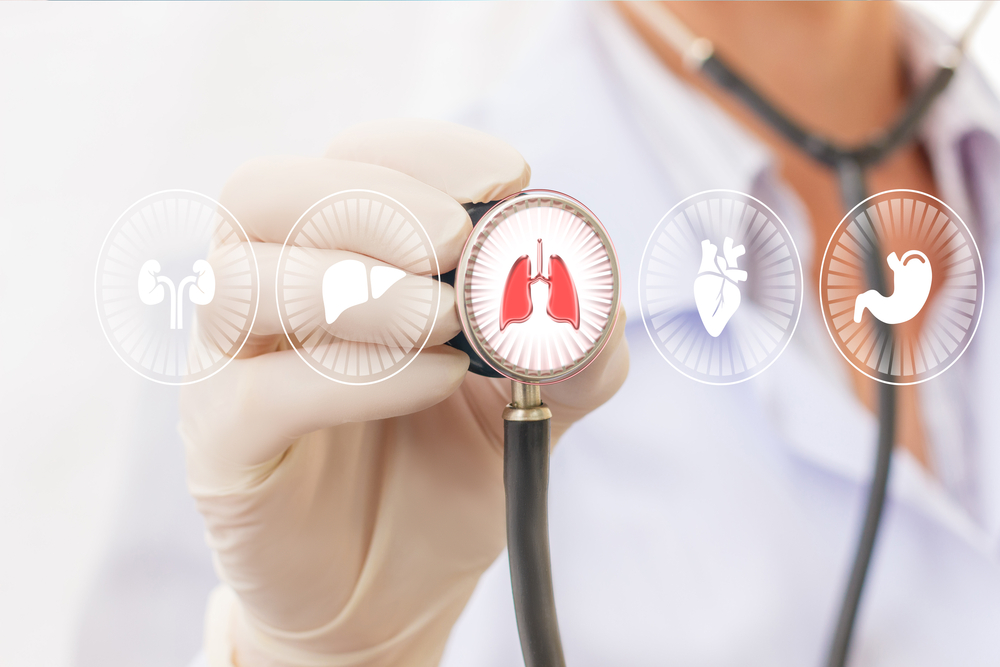Protein Could Help Monitor Heart Stress in Rare Form of PH

Soluble ST2 (sST2) protein could be an additional non-invasive biomarker for monitoring patients with chronic thromboembolic pulmonary hypertension (CTEPH) undergoing interventional treatment with balloon pulmonary angioplasty (BPA), a study suggests.
The study, “Soluble ST2 as a Biomarker for Early Complications in Patients with Chronic Thromboembolic Pulmonary Hypertension Treated with Balloon Pulmonary Angioplasty,” was published in the journal Diagnostics.
CTEPH is a rare form of pulmonary hypertension caused by the formation of blood clots in blood vessels of the lungs, restricting blood flow and increasing localized blood pressure. As a result, the heart must work harder to pump blood.
sST2 is a protein that has emerged in recent years as a biomarker of heart failure because its levels rise markedly when the heart is under stress. However, there is insufficient data on the clinical usefulness of sST2 as a biomarker in patients with CTEPH.
To fill this knowledge gap, a team led by researchers at the European Health Center Otwock, in Poland, assessed sST2 concentration and its changes in patients with CTEPH treated with BPA — a procedure that uses balloons to open narrowed or blocked blood vessels.
The team analyzed 57 BPA procedures performed in 37 patients with CTEPH, between July 2016 and June 2017. The patient group had a mean age of 52 years, and 21 were women. In total, 17 patients were treated with Revatio (sildenafil) and 20 others were treated with Adempas (riociguat). The median length of hospitalization was five days.
Cardiac biomarkers N-terminal pro B-type natriuretic peptide (NT-proBNP), troponin T (TnT), and sST2 were assessed at four time points: before the BPA procedure, 24 hours and 48 hours after the procedure, and at discharge from hospital.
Before the BPA procedure, median sST2 levels were 26.56 nanograms (ng)/mL. sST2 levels were significantly higher 24 hours and 48 hours after the BPA compared to levels at admission — 33.31 ng/mL at 24 hours and 27.45 ng/mL at 48 hours.
However, on the day of discharge, sST2 levels were significantly lower compared to levels measured on admission day — 21.59 ng/mL at discharge vs. 26.56 ng/mL before BPA.
The levels of the other biomarkers, NT-proBNP and TnT, decreased at 24 and 48 hours after the procedure, with the lowest concentration recorded on the day of hospital discharge.
After the BPA procedure, 42 cases of no complications and 15 cases of complications were reported. Complications included cardiomyopathy (a condition affecting the heart’s muscle), pneumonia, and the need for ventilation.
Significant differences were found between these two groups in hemodynamic parameters, namely in terms of pulmonary artery pressure — 41.6 mmHg in those with no complications vs. 50.3 mmHG in those with complications.
Furthermore, sST2 levels 24 hours after the BPA procedure were significantly higher in the group with complications compared to the group without complications (97.66 vs. 26.86 ng/mL). Significant differences were also observed between subgroups for NT-proBNP levels at each time point.
A statistical analysis showed that sST2 levels at hospital admission of 31.48 ng/mL or higher had a sensitivity (ability of a test to correctly identify people with a certain condition) of 66% and specificity (ability of a test to correctly identify people without a certain condition) of 69% for prediction of complications in the period after the BPA procedure.
Taken together, the data suggest that “sST2 could be considered as an additional noninvasive tool for monitoring patients undergoing balloon pulmonary angioplasty for complications and risk stratification,” the researchers wrote.
The team, however, recognized the need for further studies.







